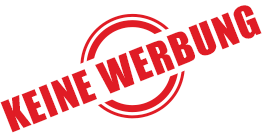member states governing the processing of personal data, impose strict obligations on entities subject to the GDPR, including but not limited to: (i) accountability and transparency requirements, and enhanced requirements for obtaining valid consent from data subjects; (ii) obligations to consider data protection as any new products or services are developed and to limit the amount of personal data processed; (iii) obligations to comply with the data protection rights of data subjects; and (iv) obligations to report certain personal data breaches to governmental authorities and individuals. Data protection authorities from the different E.U. member states and other European countries may enforce the GDPR and national data protection laws differently, and introduce additional national regulations and guidelines, which adds to the complexity of processing European personal data. Failure to comply with the requirements of the GDPR and the related national data protection laws may result in significant monetary fines and other administrative penalties (the GDPR authorizes fines for certain violations of up to 4% of global annual revenue or €20 million, whichever is greater) as well as civil liability claims from individuals whose personal data was processed. Additionally, expenses associated with compliance could reduce our operating margins.
The GDPR also prohibits the transfer of personal data from the E.U. to countries outside of the E.U. unless made to a country deemed by the European Commission to provide adequate protection for personal data or accomplished by means of an approved data transfer mechanism (e.g., standard contractual clauses). Data protection authority guidance and enforcement actions that restrict companies’ ability to transfer data may increase risk relating to data transfers or make it more difficult or impossible to transfer E.U. personal data to the U.S.
Competitive Environment
The pharmaceutical and biotechnology industries are characterized by rapidly evolving technology and intense competition. Our competitors include major multi-national pharmaceutical companies and biotechnology companies developing both generic and proprietary therapies to treat serious diseases. Many of these companies are well-established and possess technical, human, research and development, financial, and sales and marketing resources significantly greater than ours. In addition, many of our potential competitors have formed strategic collaborations, partnerships and other types of joint ventures with larger, well established industry competitors that afford these companies potential research and development and commercialization advantages in the therapeutic areas we are currently pursuing.
Academic research centers, governmental agencies and other public and private research organizations are also conducting and financing research activities which may produce products directly competitive to those being developed by us. In addition, many of these competitors may be able to obtain patent protection, obtain FDA and other regulatory approvals and begin commercial sales of their products before us.
Companies that currently sell or are developing proprietary products for the prevention and treatment of C. difficile infection include: Actelion Pharmaceutical Ltd., Artugen Therapeutics, Inc., AzurRx, Inc., Deinove, Pfizer Inc., Merck & Co. Inc., Merus B.V., Pfizer Inc., Rebiotix, Inc., Seres Therapeutics, Inc., Summit Therapeutics plc. and Vedanata Biosciences Inc. Companies that sell or are developing products for the treatment or prevention of acute graft-versus-host-disease (aGVHD) include: Amgen, Inc., Astellas Pharma, Janssen Biotech, Inc., Mallinckrodt plc, Mesoblast, Inc., Novartis International AG, Pfizer, Inc. Roche AG and Takeda Pharmaceutical Company Ltd.
Only three oncolytic virus (OV) products have been approved in different global markets. Amgen Inc.’s Imlygic® (T-VEC, OncoVEX) for melanoma (USA); Daiichi Sankyo Company, Limited‘s DELYTACT® for malignant glioma (Japan) and Shanghai Sunway Biotech Co., Ltd Oncorine® for patients with late-stage refractory nasopharyngeal cancer (China).
More than 60 companies have publicly identified that they are pursuing clinical development of different forms of OV products. Adenoviruses are the most commonly used viruses in these programs, with modified adenoviruses under development by companies including AdCure Bio LLC, Candel Therapeutics, Inc., CG Oncology, Inc., DNAtrix, Inc., EpicentRx, Inc., GeneMedicine, Co Ltd., IconOVir Bio, Inc., Lokon Pharma AB, Multivir, Inc., NewGenPharm Incorporation, Oncolys BioPharma, Inc., Orca Therapeutics B.V., PsiOxus Therapeutics Ltd, Shanghai Sunway Biotech Co., Ltd , Targovax Oy|Targovax ASA, Tessa Therapeutics, TILT Biotherapeutics, Ltd., and Valo Therapeutics Oy.
OV products have been or are being developed using other virus backbones, including: Coxsackie virus (Viralytics Ltd., Oncorus Inc.); herpes simplex virus (Amgen, Inc., Candel Therapeutics, Inc., Daiichi Sankyo Company Ltd., Oncorus, Inc., Replimune, Inc., Takara Bio, Inc., Wuhan Binhui Biotechnology Co., Ltd.); Maraba virus (Turnstone Biologics, Inc.); measles virus (Vyriad, Inc.); myxoma virus (OncoMyx Therapeutics, Inc.); parvovirus (Oryx GmbH & Co. KG), reovirus (Oncolytics Biotech, Inc.); Seneca Valley virus

